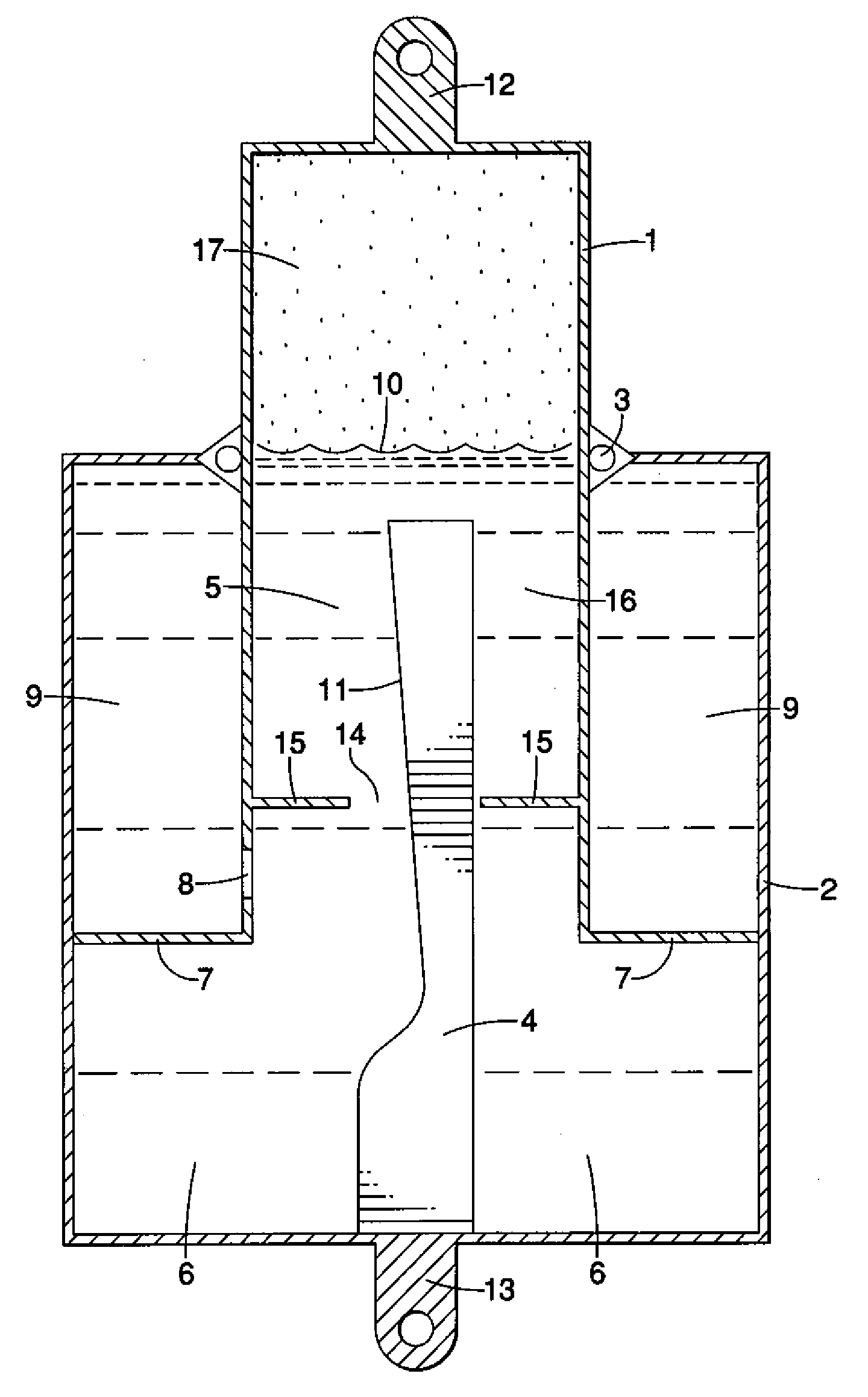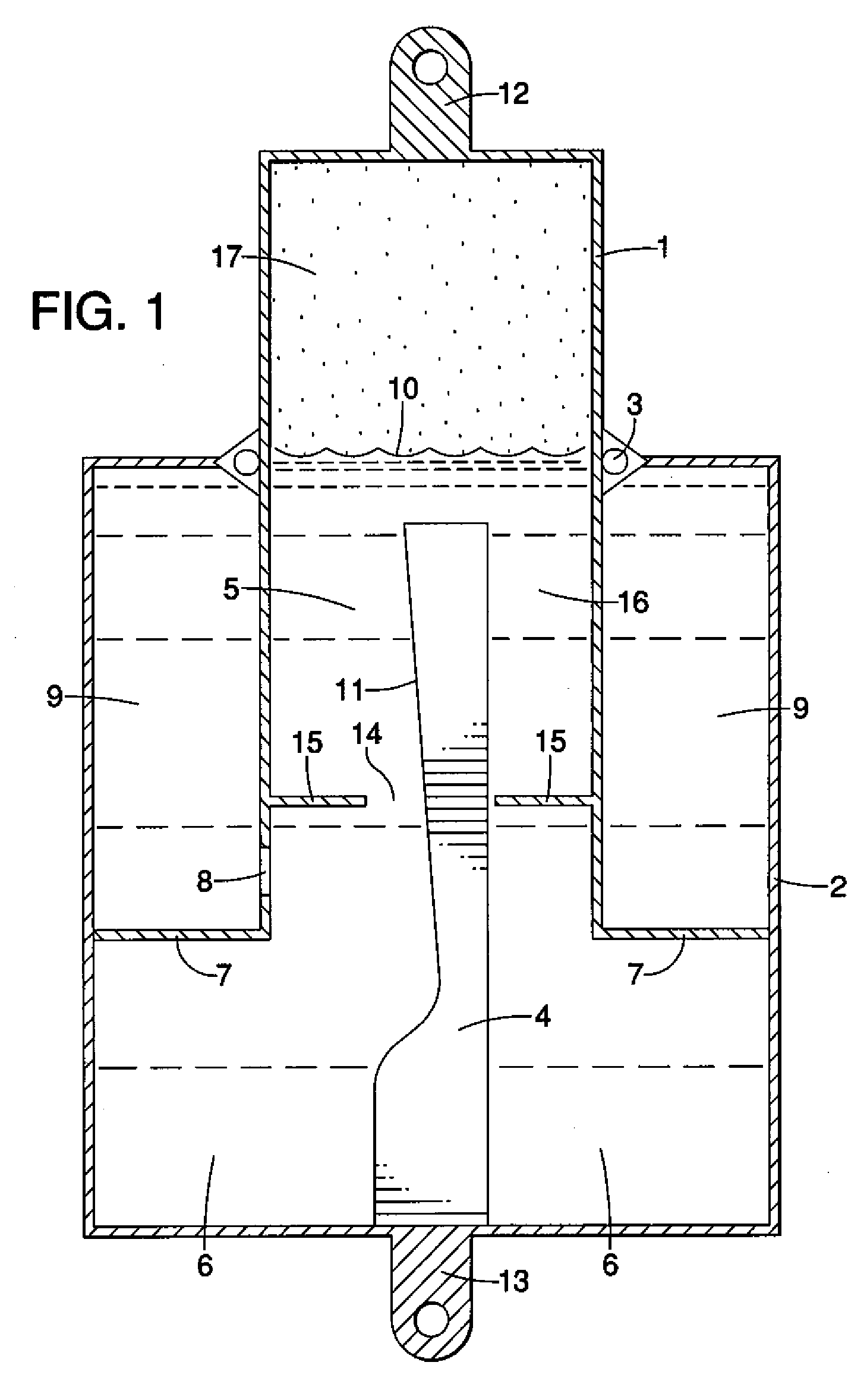Rod Type Mechanical Valve for Fluid Flow Control
- Summary
- Abstract
- Description
- Claims
- Application Information
AI Technical Summary
Benefits of technology
Problems solved by technology
Method used
Image
Examples
examples
[0086] In a recent experiment conducted by the inventors in Barstow, Calif., U.S.A., several embodiments of the present invention, (hereinafter the “new shock absorbers”), were compared against well-known expensive racing shock absorbers, (hereinafter referred to as the “control shock absorbers”), which are presently marketed by a leading manufacturer.
[0087] The physical dimensions of the shock absorbers were identical at 14 inches long with a 2.5 inch diameter. The control shock absorbers weighed 17 pounds each, plus the additional weight of a nitrogen tank and hose. It was necessary for the nitrogen tank to be installed at an elevation above the control shock absorbers on the vehicle. By comparison, the new shock absorbers weighed only 10 pounds and did not require any special installation considerations.
[0088] Following each vehicle's run of the course, the temperature of both sets of shock absorbers were taken by a laser thermometer and recorded. In sum, the control shock abso...
PUM
 Login to View More
Login to View More Abstract
Description
Claims
Application Information
 Login to View More
Login to View More - R&D
- Intellectual Property
- Life Sciences
- Materials
- Tech Scout
- Unparalleled Data Quality
- Higher Quality Content
- 60% Fewer Hallucinations
Browse by: Latest US Patents, China's latest patents, Technical Efficacy Thesaurus, Application Domain, Technology Topic, Popular Technical Reports.
© 2025 PatSnap. All rights reserved.Legal|Privacy policy|Modern Slavery Act Transparency Statement|Sitemap|About US| Contact US: help@patsnap.com



